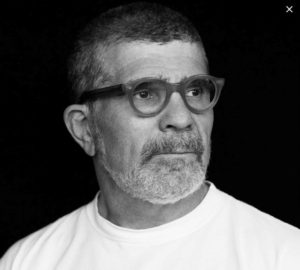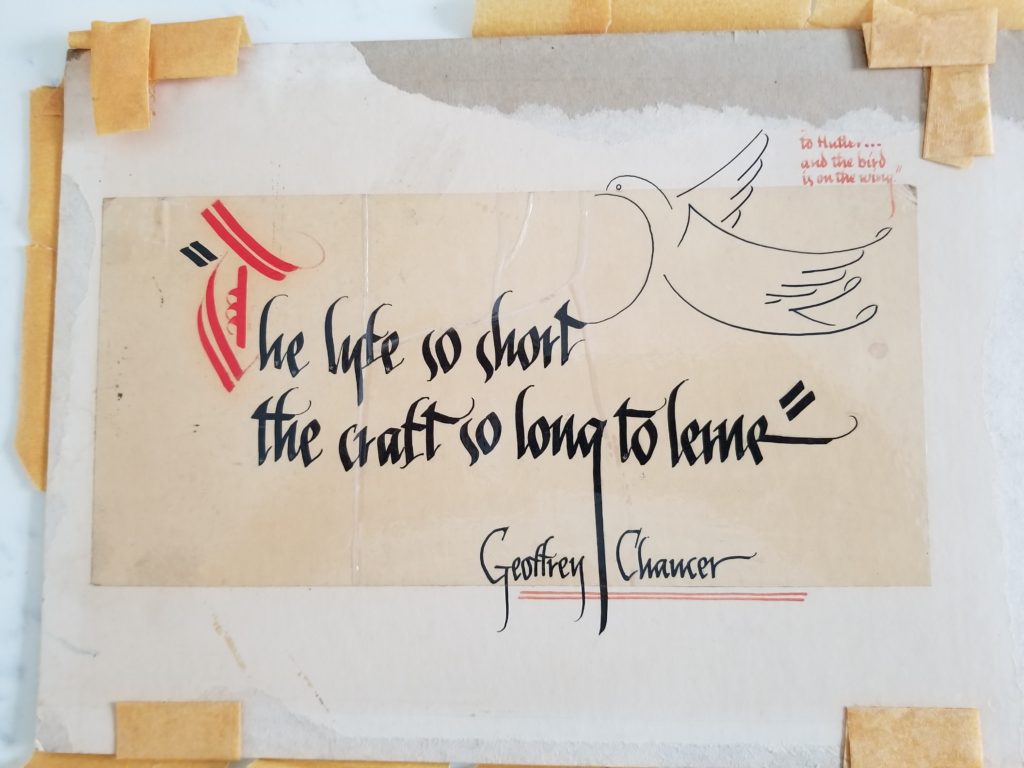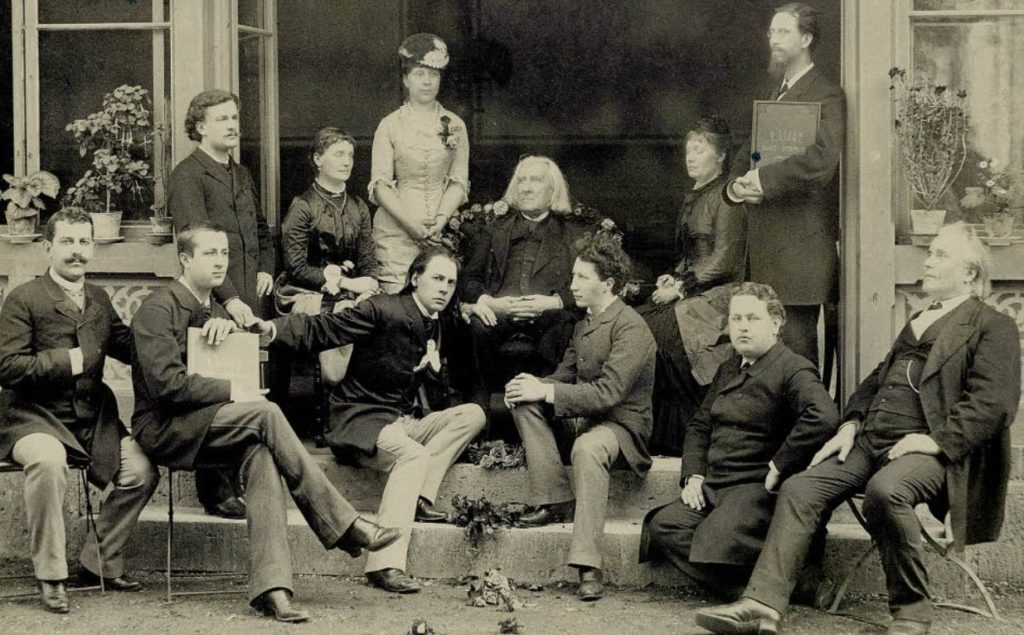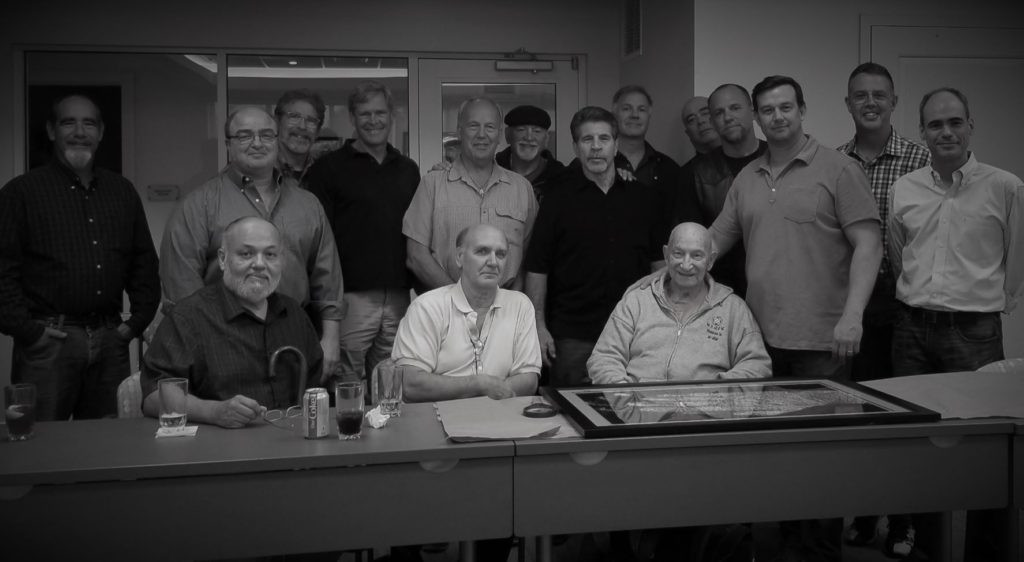Welcome to the March 2019 Shinbun.
In any art, one of the keys to success is time. Even the most basic Jujutsu skills require years or even decades of learning and practice. The fabled “ten thousand hours” to develop a world-class skill would, if you took a 3 hour class per week and practiced one hour each day without a vacation, take a little over 19 years. But unlike learning a musical instrument or musical composition, learning and developing a martial art requires physical stamina as well as patience and discipline. But as the years go by, the trick to staying on the mat becomes avoiding injury.
So this month’s theme is Longevity.
As always, please send pictures, pieces, ideas for pieces, stories, and upcoming events. I'll get them posted and sent out with the next newsletter.
Thank you all,
-Sensei Scot Lynch
Yondan, Tsugiashi-Do

 oil on canvas, 1847
oil on canvas, 1847
Franz Liszt (your humble servant’s favorite composer) had an untypically long career, living to the age of 74, (32 years older than the average 19th Century lifespan). Liszt is best known for his solo piano compositions and amazing virtuoso performances, but over his long career he also taught and supported a vast number of students who were deeply dedicated to him. (Sound familiar?)
Many of the greats of the Classical and Romantic periods lived only long enough to compose their great works (Mozart lived to 35, Chopin to 39). But Liszt single-handedly connected the Classical period to the modern age, having met both Beethoven as a young man, and the 23-year old Debussy in the last year of Liszt's life. In addition to creating an extensive body of work, Liszt promoted lesser known musicians, started and directed the Hungarian National Orchestra, created and ran several musical foundations, and raised funds for other composers. Liszt was a composer for all seasons, but he enjoyed a long career to make it all happen.
 Black and White photograph, 1886
Black and White photograph, 1886

 Old age and Treachery will always beat out youth and exuberance.
Old age and Treachery will always beat out youth and exuberance.
Longevity and the “Tea Room”
In the early 1980’s, the “tea room” was the TAAZ bar in Closter, New Jersey, the darkest, sleaziest, slimiest biker bar in Bergen County, which fate placed directly under the Yoshitsune Dojo. The Rolling Stones and Neil Young blared from the juke box. Sawdust often covered the floor.  The fare was generally pitchers of beer and bowls of pretzels. The bikers never bothered us or even stared when Doc would get up from the table and motion one of us over to show the finer points of a move that might not have been obvious on the mat earlier. We urgently tried to be somewhere else when we heard, among the tiny tables with red and white checkered table cloths, Mickey Bradle say “Hold my beer and watch this…” As much was learned in that little bar as was on the big mat upstairs. Last call for the Yoshitsune crowd was always a pitcher of soft drinks before the drive home.
The fare was generally pitchers of beer and bowls of pretzels. The bikers never bothered us or even stared when Doc would get up from the table and motion one of us over to show the finer points of a move that might not have been obvious on the mat earlier. We urgently tried to be somewhere else when we heard, among the tiny tables with red and white checkered table cloths, Mickey Bradle say “Hold my beer and watch this…” As much was learned in that little bar as was on the big mat upstairs. Last call for the Yoshitsune crowd was always a pitcher of soft drinks before the drive home.
In the 1990s, the tea room became Billy B’s, on River Road in Edgewater, about ½ mile down the road from the dojo. Infinitely more respectable than the TAAZ bar. Beer and pretzels was still the fare. Frank Sinatra and Tony Bennett crooned in the background.
In the “0’s” the tea room became Doc’s dining room at Grasonville, MD. Each night (when I could make the trip) we would leave Kent Island Martial Arts and migrate to Oyster Cove Rd, where a large protein shake, an oatmeal cookie, and a single scoop of vanilla frozen yogurt awaited each of us. We went through our manuals, we checked our notes, we asked Sensei questions. We would get up with Sensei, just like we did in the TAAZ bar to receive the onions of a given move. We caught up on family. We told stories of "the old days." It was very quiet. But it was still the Tea Room.
The Tea Room still remains an important extension of the mat and an important tradition. But as longevity, avoiding injury, and staying on the mat became a larger concern to us, the décor, the refreshments, and the music have also changed. But not the tradition of the Tea Room.

Things you don't normally hear in the dojo:
![]() Careful, you're on my pacemaker.
Careful, you're on my pacemaker.
Good Reads

The book “Lone Survivor” by Navy Seal Marcus Luttrell in 2008 was a runaway bestseller, Mark Waldberg played him in the blockbuster movie. Both are excellent and the movie is surprisingly faithful to the book. However a few years after publishing his memoir of Operation Redwings (an operation in Afghanstan that went horribly wrong), he published a less well known book called "Service" in 2012, which is a memoir of operations after his Lone Survivor experience, and how he ultimately chose to give up being a Navy Seal and leave the Navy.
If you love reading about special operations derring-do, there is a lot to love in this book. But I see it as a transition from the one-dimensional, testosterone-laden war book to a more thoughtful, measured memoir of all the “other stuff” involved. I see it as an important reminder of what these warriors give up. I see it as a young man coming to grips with a career he thought would last much longer, and develops a “wisdom” about what he can reasonably expect from his physical body, and how that matters. I see it as a lesson in the true, unspoken costs of the War on Terror. I found Service as a cautionary tale about longevity.
My back and pelvis were busted up so bad that if I sat for more than twenty minutes, I lost all feeling in my legs, and eventually in my arms too. The pain from the compression on my spine was getting worse all the time. With sleep seldom coming, I got by on little cocktails of Vicodin, Flexeril, Ambien, whatever combinations the doc thought might help. But I wouldn’t surrender to the forces that were trying to take me down from within. Staying on the line with the guys was more important than saving my body—and I was willing to do whatever it took to stay on the line, always ready to do my duty when midnight came.
pg 173
I was thirty-one, but well aware that I was becoming an old man.
pg 179

The Onions of Longevity
In the early 80’s at the Yoshitsune Dojo, Sensei Richard Faustini, a young powerlifter and Yondan in Tai Kwan do, would arrive well before Shihan Doc Cohe’s jujitsu class would start. He would lift weights in Sensei DePascuale Jr’s weight room, then jump rope on the karate deck for 30 minutes. He would then attend the class (as a student even though he taught his own class at the Ridgewood YMCA). After class, he would go kumite with the young black belts, giving each of them advice on their techniques and fighting styles before packing up and going home (he would occasionally accompany us to the bar downstairs, though never dipping into the pretzels and opting for a light beer). As a green belt I was once or twice permitted a round or two with him, and although Sensei Faustini toned it down considerably for me, I recall the sensation very much like attempting to cross Route 17 on foot, dodging speeding semi-trucks.
Twenty years later, in late 2002, I found myself at the Faustini Institute of Martial Arts in Oradell, NJ, one Thursday night. After class, as I was speaking with Sensei Faustini and one of his daughters (also a blackbelt instructor at the school), I mentioned that I had just recently been with Soke Cohe at Tom Fox’s dojo in Kent Island, Maryland. He asked me how Doc was doing, to which I replied “He’s doing great, he’s moving great, he’s teaching, and bodies are flying.” Sensei Faustini smiled, turned to his daughter (I think it was Brianna, but I couldn't honestly tell them apart). “Now there’s an amazing man," he said, nodding his head. " That’s what I want: I want to be 74 years old, out there on the mat, hangin’ and bangin’.”
 In recent years, the Faustini Institute of Martial Arts has increased its focus on physical fitness and health practices. Sensei is no longer just a kick-ass senior blackbelt, but is also a certified kettle bell and physical fitness instructor. The dojo is lit
In recent years, the Faustini Institute of Martial Arts has increased its focus on physical fitness and health practices. Sensei is no longer just a kick-ass senior blackbelt, but is also a certified kettle bell and physical fitness instructor. The dojo is lit tered with kettlebells and TRX cables. Yoga, Pilates and stretching courses are on offer as well as personalize fitness training. I am the happy recipient of the FIMA newsletter, which almost always includes some new recipe for tuna salad or low-carb fajitas.
tered with kettlebells and TRX cables. Yoga, Pilates and stretching courses are on offer as well as personalize fitness training. I am the happy recipient of the FIMA newsletter, which almost always includes some new recipe for tuna salad or low-carb fajitas.
Fast forward to 2019: A few weeks ago, I spent some time with Sensei Faustini at his new dojo in Emerson. The school is beautiful, the kettlebells and TRX cables are still there, and I can assure the reader that the sensation of trying to cross Route 17 between speeding semi-trucks quickly came back to me. It gives me great pleasure to say that Sensei Richard Faustini, fitness guru, Shodai and Founder of the Heiho Shindo system, is still out there, still on the mat, still moving, still teaching, and most definitely still hangin’ and bangin’.
And that’s the onions of Longevity.
The Way it Was, 1884

The Way it Was, 2018

Thank you for reading this newsletter. More are coming and your feedback will make them better.
Faithfully,
Sensei Scot Lynch
Yondan, Tsugiashi Do
April 1, 2019
I can relate to this months shinbun. Having two bad shoulders and lower back problems, I cant hang & bang like I used to. Which makes it very frustrating being on the mat and being limited on what I can do. Sometimes I think about hanging it up, but then something or someone, probably that guy running across route 17, lites a fire in me and I keep going. It gets in your blood, Like Soke Cohe would say “You can leave the dojo but the dojo will never leave you”. Oh and by the way Scott, I drove a semi-truck on rt. 17, and I”ll be looking for you! Great Shinbun it hit home!
April 2, 2019
Many good memories in the Tea Room at Doc’s apt in MD. We definitely got the onions.
Great Shinbun Scot
April 2, 2019
Mike, I’m very sorry to hear about your shoulders and back. For those of our readers who *don’t* uki for you, I’m sure your comment sounds almost believable. But your students and I, who wake up Saturday mornings after taking falls for you, and feel like we were in a car accident, read your comment with some skepticism. If you really are limited, then I’m thankful. But it is also your students and I who are, on Saturday morning, (after a few Advil and some coffee), glad that you don’t “hang it up.”
October 28, 2019
I really like what you guys are usually up too.
This type of clever work and coverage! Keep up the awesome works guys I’ve incorporated you guys to
our blogroll.